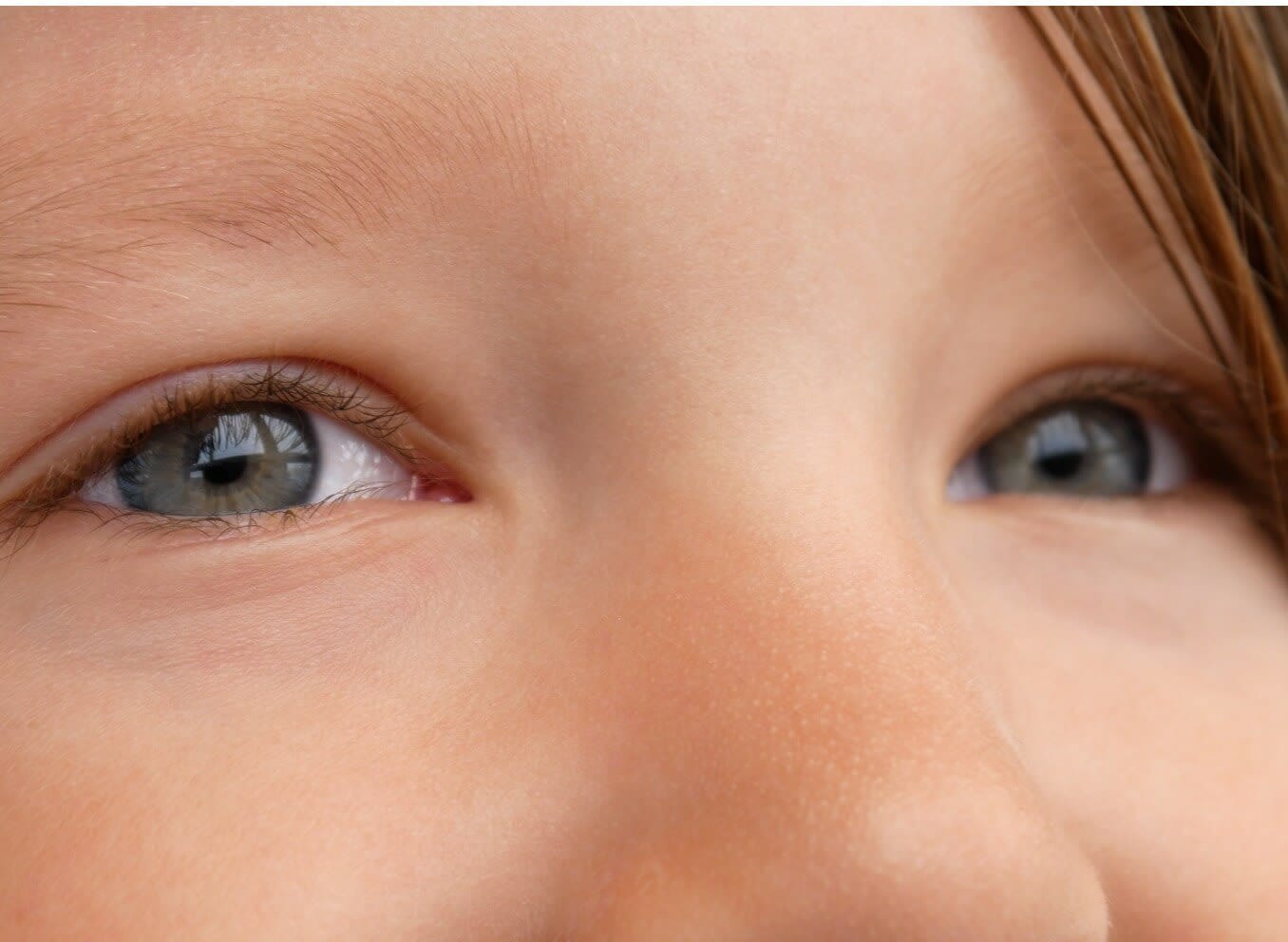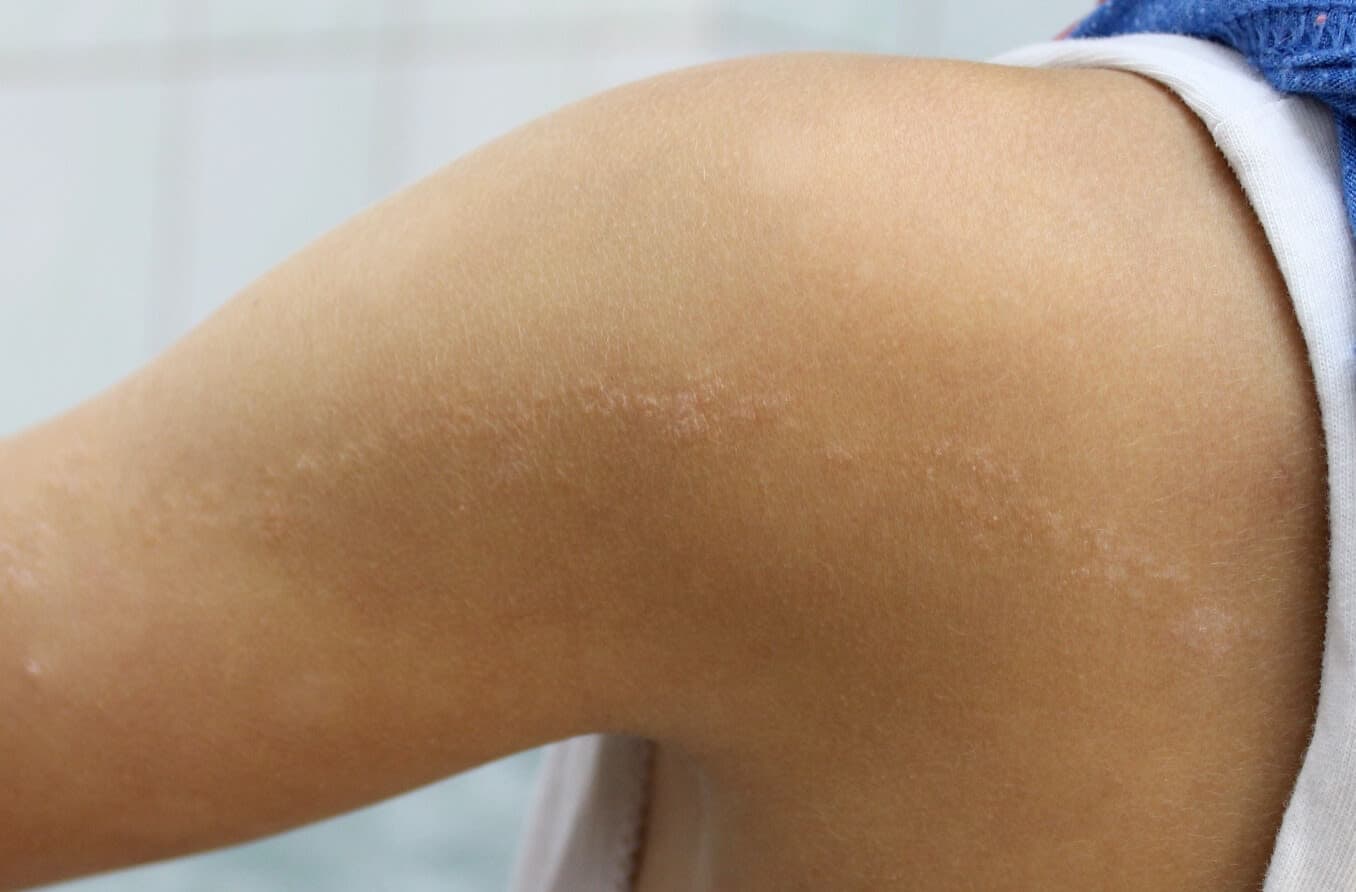What are Brushfield spots?
Brushfield spots are small white, gray/brown or yellow spots in a circular arrangement on the edges of the iris, the colored part of the eye. They are due to an accumulation of iris connective tissue in the iris and do not affect vision. These spots are often seen in individuals with Down syndrome.
Individuals with blue eyes and hazel eyes more commonly have visible Brushfield spots. This is because the spots are more difficult to detect in brown eyes. The higher concentration of melanin in dark-colored eyes camouflages these spots.
These spots are named after an English psychiatrist named Thomas Brushfield who first described them in 1924. He noticed the presence of easily seen white spots on the iris of children with Down syndrome.
Brushfield spots and Down syndrome
According to the American Academy of Ophthalmology, the prevalence of Brushfield spots in individuals with Down syndrome (trisomy 21) is over 90%.
Fortunately, Brushfield spots do not affect vision. Before genetic testing was widely available, Brushfield spots were one of the indicators that aided the diagnosis of Down syndrome.
Detection of Brushfield spots alerted doctors to other potential eye issues associated with Down syndrome, including:
High astigmatism, hyperopia or myopia
Strabismus (“crossed eyes”)
Nystagmus, which causes rapid, repetitive eye movements
Worsened visual acuity
Difficulty focusing up-close
Development of cataracts
Corneal issues such as keratoconus
Scientists have not found a particular gene that causes Brushfield spots. But examination of the iris tissue has revealed that the spots are due to small “mounds” of collagen tissue.
Are Brushfield spots normal?
Nodules that appear identical to Brushfield spots are sometimes present in individuals that do not have Down syndrome. Typically, these spots are referred to as Kunkmann-Wölffian bodies or Wölfflin nodules. According to the American Academy of Ophthalmology and researchers, the prevalence of Wölfflin nodules in the population is estimated to be about 10% to 25%.
Sometimes the term Kunkmann-Wölffian bodies and Brushfield spots are used interchangeably. Some sources state that Brushfield spots can occur in individuals without Down syndrome.
Most sources state that they look clinically the same as Brushfield spots. But some researchers report their appearance is a little different. Kunkmann-Wölffian bodies are described as areas lacking pigment in the peripheral iris. These nodules are also described as lying further on the edge of the iris, having a less distinct boundary and being fewer in number.
Are Brushfield spots more common in certain populations?
Brushfield spots are more commonly reported in research studies of children with Down syndrome in Slovenia, Brazil and the United States. Studies based in Italy, Egypt, South Asia and East Asia do not report findings of Brushfield spots.
This is likely because of the variation in iris colors in the populations who live in these regions. Brushfield spots are more easily detected in children with blue, green or hazel eyes.
How visible are Brushfield spots?
Brushfield spots are visible and can be seen with standard white light in individuals with light-colored eyes such as hazel, green and blue. These spots are not visible in dark-colored eyes.
A recent study found that Brushfield spots and Wölfflin nodules that were not visible with white light in individuals with dark-colored eyes could be detected when near-infrared light was used.
Detecting Brushfield spots using near-infrared light in individuals with dark eyes is an important tool. Researchers have found more extensive peripheral thinning of the iris in children with Brushfield spots with Down syndrome.
Thinning of the peripheral region of the iris is only present in less than 10% of the overall population. But, it can be seen in a large number of individuals with Down syndrome. These results imply an association between peripheral iris thinning and Brushfield spots in children with Down syndrome.
When to see a doctor
Brushfield spots are commonly reported in people diagnosed with Down syndrome. Eye disease and other eye issues are present in 60% to 80% of individuals with Down syndrome. So, doctors recommend that a comprehensive eye exam be performed at birth and again before the six-month birthday.
In the rest of the population, Wölfflin nodules are thought to be present in about 10% of individuals. These spots are due to collagen tissue accumulation, creating a “spot.”
Neither Brushfield spots nor Wölfflin nodules impact vision. However, if you notice new changes to the appearance of your iris, it is important to contact an eye doctor.





